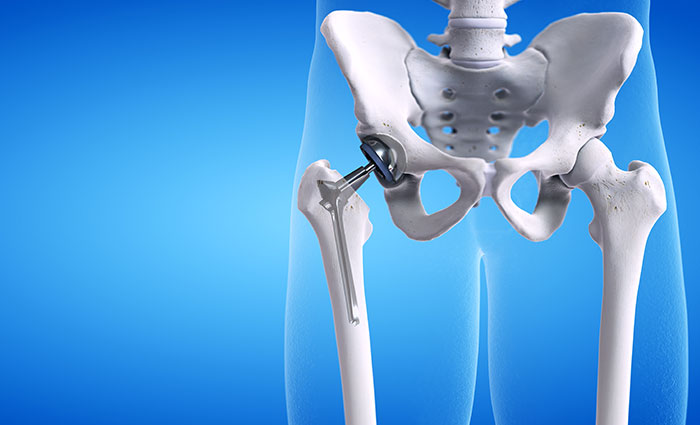While the idea of any major surgery might be frightening, a total hip replacement, sometimes called total hip arthroplasties, is common. In the United States alone, orthopedic surgeons perform an estimated 450,000 total hip replacements every year, and researchers expect that number to rise.
The popularity of total hip replacements stems from their effectiveness. Up to 95 percent of patients experience pain relief after recovering, and that number remains relatively high for the next 20 years. If the replacement becomes loose or worn, it can be redone.
What is a total hip replacement?
During a total hip replacement, the head of your femur is removed. A prosthetic is put in its place, typically made primarily of titanium, although surgeons sometimes use other materials. The cartilage failing to cushion the head of your femur, called the acetabulum, is also removed. Its replacement tends to be plastic or ceramic.
Your hip is a ball-and-socket joint, which means that a spherical ball rotates within a socket, giving you the ability to turn and move your leg in multiple directions. In the case of a hip, the ball is the head of the femur, and the socket is a place on your pelvis. The acetabulum allows the two to interact smoothly without the pain or friction you may be experiencing with your original hip.
In contrast, a hemiarthroplasty, which you may also read about when researching hip pain treatments, is a surgical procedure in which half of your hip joint is replaced. This type of operation is usually used to treat fractures in your femoral neck or situations in which your acetabulum is intact.
Why might you need a total hip replacement?
You might need a total hip replacement for a variety of reasons. Typically, osteonecrosis or some form of arthritis—most often rheumatoid arthritis, osteoarthritis or post-traumatic arthritis—is behind the issues leading someone to consider a total hip replacement. Just because you have one of these conditions doesn’t mean you will have to have a total hip replacement, though.
In general, total hip replacements are recommended for the following people:
- If someone’s pain isn’t manageable even with physical therapy, a walking aid or the use of anti-inflammatory drugs like ibuprofen or naproxen.
- Anyone who experiences hip pain severe enough to limit their everyday activities.
- Someone whose hip pain doesn’t go away while they’re resting.
- If someone is experiencing stiffness in their hip that limits their range of motion.
What are the benefits of a total hip replacement?
Having a total hip replacement can be life-changing. The main benefit is pain reduction because less pain means other aspects of your life all improve, but you’ll also likely find that you’re stronger and more coordinated.
When you’re in less pain, you will be able to walk, bend, climb stairs and even sit without much, if any, discomfort. The ability to lead a more active lifestyle than before your surgery can have cascading positive effects on your physical and mental health as you’re able to spend more time doing the things you enjoy with the people you love.
As we mentioned earlier, total hip replacements are incredibly effective and provide long-lasting relief. While a total hip replacement is a major surgery, the benefits outweigh the potential risks. Very few people experience complications, although infections, femoral fractures and hip dislocations do occur.
As medical technology and knowledge advances, total hip replacements will become even safer and more effective.
What is the recovery after a total hip replacement?
Right after the surgery is complete, healthcare professionals will monitor you as you come out of anesthesia to ensure your blood pressure and pulse are at safe levels. After that, you will be sent to a hospital room to recover further. Later on, you will meet with a physical therapist, who will set up an exercise plan for you.
Don’t worry if you don’t think you’re in good shape or flexible enough to do some of the exercises you might have seen. Your physical therapist will work with you to ensure the plan suits your needs.
You may have to stay in the hospital for a few days. Once you’re home or in a rehabilitation center, the real recovery work begins. In addition to keeping your stitches clean and dry, you will have a lot of physical therapy to do. Keeping up with your physical therapy routine is essential if you want to restore your full range of motion and strength after the surgery. While you might be uncomfortable with the exercises at first, they will lead to less pain and more mobility as you continue to heal.
Hip replacement in Raleigh
If you’re suffering from severe hip pain or stiffness that’s getting in the way of your everyday activities, a total hip replacement could be the best option for you. Contact our orthopedic hip specialists today to schedule a consultation.






